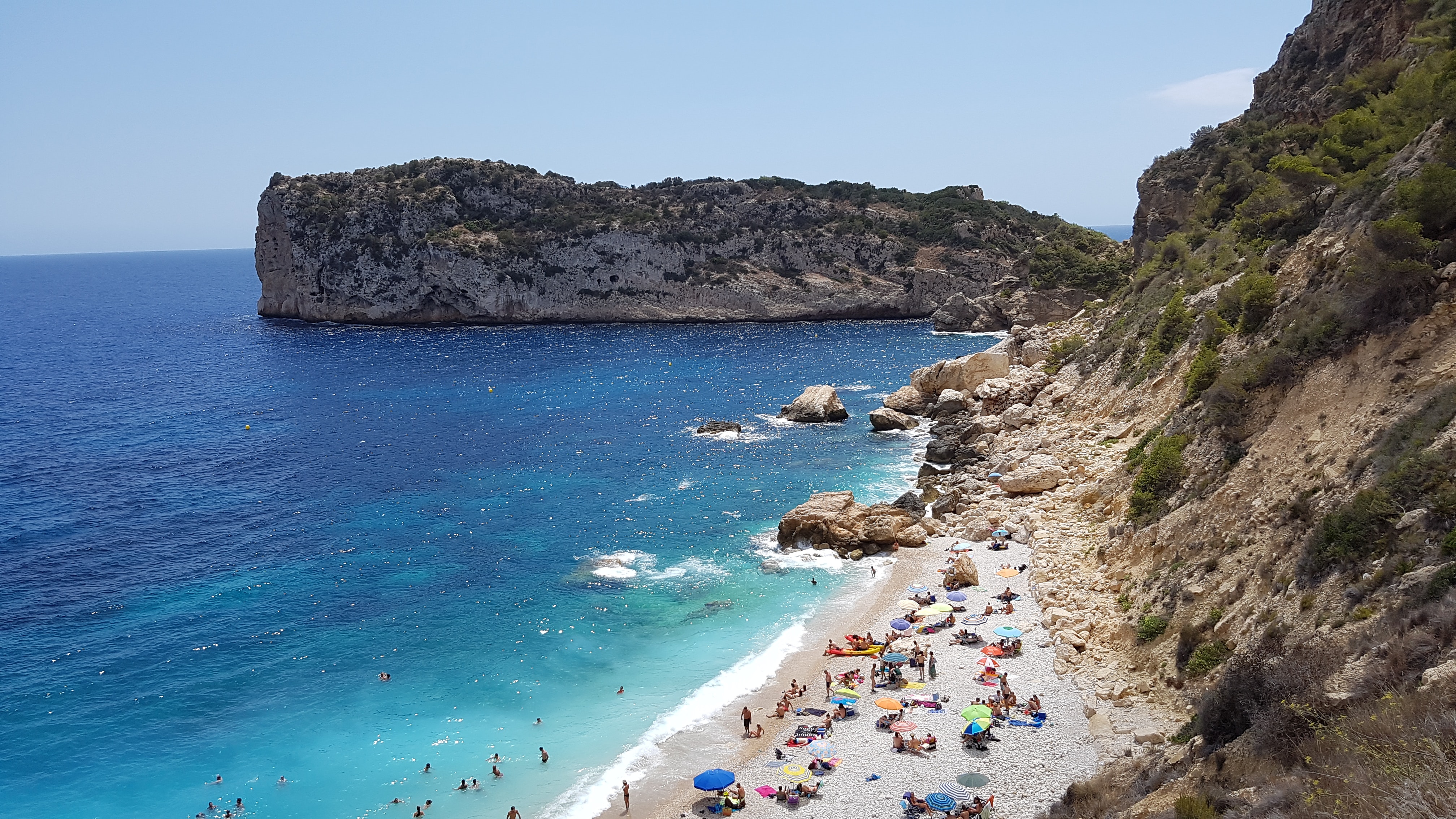The gateway to Spain’s Costa Blanca, Alicante is the second largest city in the Valencian Community with over 350,000 inhabitants. Dominated by the imposing Santa Barbara Castle that looks down on the city and its glitz marina, Alicante has until recently been overlooked in terms as a destination with most people just using its airport to get to Benidorm and other Costa Blanca resorts.
One of the city’s popular attractions is its beautiful Explanada de España. This palm-fringed waterfront walkway is made up of millions of tiny marble tiles carefully laid out to resemble the characteristics of ocean waves.
The promenade continues to be the place where Alicante folk dress in their best attire, to meet up with family members and converse until well after dusk. A magnet for locals and tourists, this outdoor venue is also a perfect spot to enjoy musical concerts.
The Promenade extends all of the way from the Port of Alicante to the Gran Vía and at the far end is the famous statue of Mark Hersch.
It was the ideal of the town’s architect José Guardiola Picó in 1867, to enhance the traditional Spanish custom of the ‘paseo’. n evening stroll)
Alicante Old Town
Devoid of foreign tourist Alicante’s beaches have a distinctly local flavour that encompasses the main city beach in the centre and the Playa San Juan in an upmarket neighbourhood just to the north of the city. The Old Town has plenty to offer the intrepid tourist with its Baroque architecture and narrow alleyways where you are sure to find an unassuming bar offering a menu del dia for less than 12€.
Quick Facts about Alicante
Here’s a few interesting tidbits of information about the city of Alicante:
Where is Alicante?
Alicante is located on the Mediterranean Sea in south-eastern Spain. Alicante is a one hour drive south of Valencia and 5 hours south of Barcelona. Alicante is on the Costa Blanca.
History & Architecture in Alicante
With a history dating back 7,000 years to a time when hunter-gatherers moved south from central Europe, Alicante has played host to several civilizations that include Greeks, Phoenician’s, Romans and Moors. Following the Reconquista, Alicante became a battleground between the Kingdom of Castile and the Crown of Aragon before becoming a major port exporting rice, olive oil, and fruit. With its newfound fortunes the city was constantly attacked by Barbary Pirates who had established a base for raiding Spain on the nearby island of Tabarca. During the War of the Spanish Succession (1701–1714) Santa Barbara Castle was occupied by the British until they were forced to leave after succumbing to French and Spanish troops. Being neutral during the First World War Alicante prospered up until the Spanish Civil War with the city being the last Republican stronghold to surrender to Franco’s forces.
Architecturally Alicante is a dream for aficionados of buildings and monuments that range from medieval castles to Gothic churches, Renaissance cathedrals and Modernist style. No matter where you wander in Alicante a surprise awaits around every corner.
Transport and How to get to Alicante
With Alicante airport being the nearest airport to Benidorm and all the other Costa Blanca resorts, the airport welcomes millions of visitors from all over Europe a year. Flights from the UK to Alicante, take around 2h 35m. ALC Alicante International Airport, has flights from nearly all major and regional airports. The airport is just 12 kilometres from downtown Alicante and has a dedicated bus service that runs on a loop 24 hours a day, 365 days a year, stopping at various points throughout the city. Alicante is also part of Spain’s high-speed rail network, with trains from Madrid and Barcelona regularly scheduled.
Alicante Weather and Climate
On the southeastern coast of Spain, Alicante enjoys a Mediterranean climate. Its mild and occasionally rainy winters are overshadowed by a generally warm and sunny climate. The city itself is located in a particularly mild region, that is overall dry and sunny. Boasting well over 300 hundred sunny days, Alicante weather is one reason why millions of tourists return year after year. The average temperature in January is around 12 ° C where as late Spring and Autumn can reach temperatures of In Alicante, a city on the southeastern coast of Spain, the climate is Mediterranean, with mild and relatively rainy winters and warm and sunny summers. The city is located in a particularly mild area, dry and sunny. The average temperature in January is 11.5 ° C (52.5 ° F), which in August is 26 ° C (79 ° F). Here are average temperatures 25 ° C . Summers are dry and sunny and easily reach highs of 28 ° C to 30 ° C
Where to stay in Alicante
The city of Alicante is more of a commercial centre than a tourist destination and as such has a limited amount of places to stay. Saying that, however, there are some very nice hotels and pensions available. To really get a feel for the place and to be in the centre of all the action stay at the Hotel Hospes Amerigo.
Once a Dominican convent, the Hospes Amerigo is a 5-star beauty that just oozes Mediterranean charm. Located just 300 metres from Postiguet Beach and with stunning views of Santa Barbara Castle from its rooftop terrace, you would be hard put to find a better location anywhere in the city.
Things To Do in Alicante
To get a feel of how Alicante must have been years gone by, take a stroll around the Barrio de Santa Cruz and visit the Chapel of Santa Cruz and the Brotherhood of the Holy Cross.
For an insight into the various civilizations that settled in the area, the Archaeological Museum MARQ is a must see on anyone’s list of things to do while in Alicante as it will help you to understand how the city evolved over the centuries.
It’s hard to ignore the Castillo de Santa Barbara as it dominates the entire city perched on a hill overlooking the marina. You can get there by either walking, taking a bus, or using a lift located opposite Postiguet beach.
Spend the day on Tabarca Island a former base for Barbary Pirates that now has the distinction of being the smallest inhabited island in Spain. The waters around Tabarca are a marine reserve, making it an ideal place for snorkelling.
Another day trip in Alicante that you would not want to miss out on, is the trip to Guadalest and Algar from Benidorm. Guided tours can be arranged to visit the most popular villages in Spain. First you will discover the mountaintop village of Guadalest where you will explore this truly stunning region and have opportunities to see one of the many museums and dine at one of its pleasant outdoor cafe’s. Standing in complete contrast to Benidorm, the village of Algar has some of the most stunning waterfalls that are hard to rival anywhere in Europe. Enjoy this memorable tour on fully air-conditioned coaches. This luxury transport will make your tour via the scenic mountains even more enjoyable.
Upon arrival at the spectacular Guadalest Valley, you will observe the region’s majestic fortress overlooking amazing views of the Guadalest Reservoir. Then take time out to relax at the Las Fuentes del Algar, a series of pretty, crystal-clear springs. Don’t forget your swimming gear!





